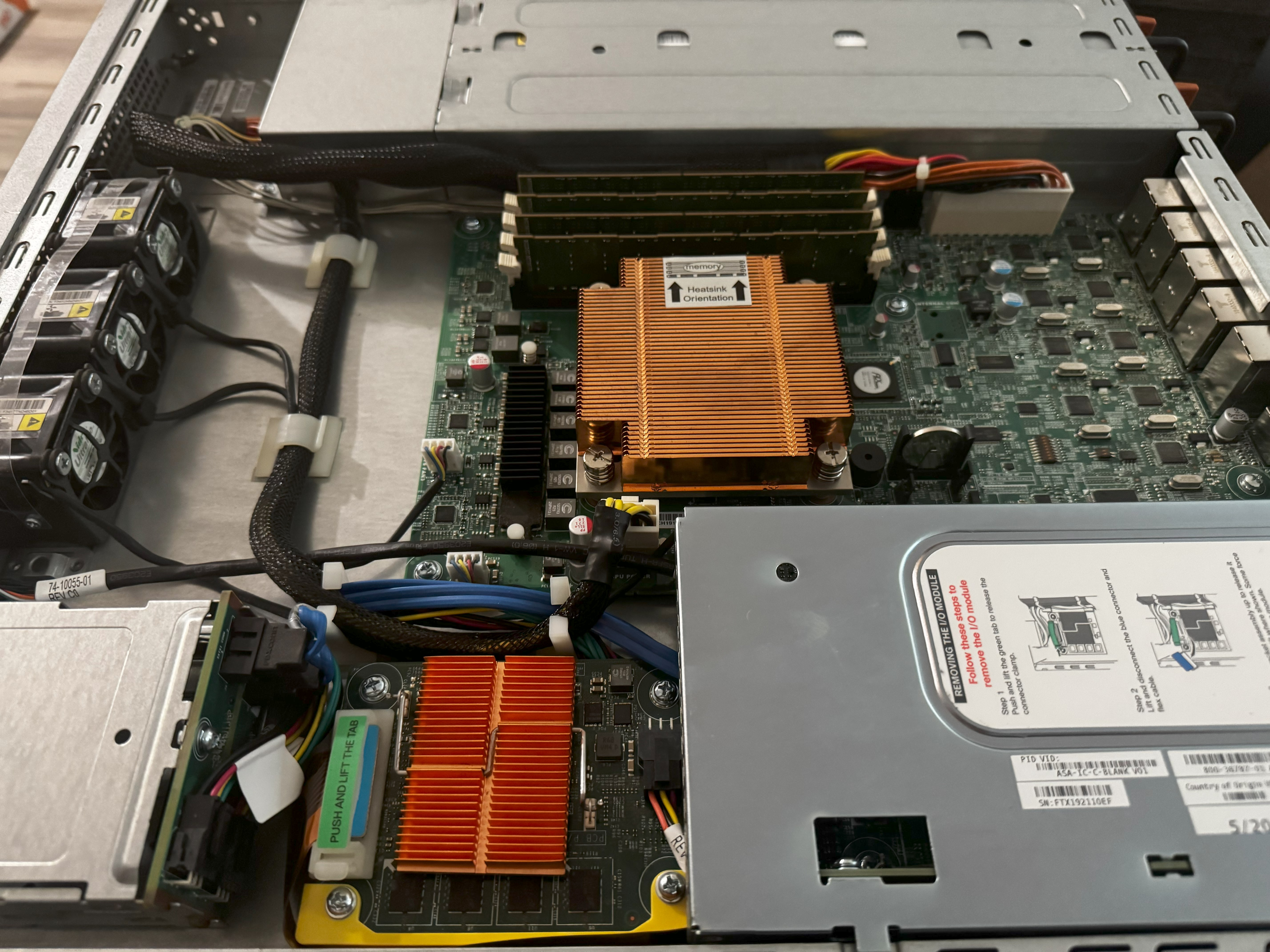Diving Into Cisco ASA: My New Home lab Journey with the ASA 5545-X
So I recently picked up a Cisco ASA 5545-X off eBay. It’s a bit larger (and louder) than I expected, but I’m excited to finally start learning the Cisco platform more seriously—especially for home labbing and expanding my skills with advanced configurations.  The unit came with dual power supplies and bays for two SSDs. When I powered it up, I immediately noticed how loud it was. It’s definitely not optimized for quiet indoor use, but for now, it’ll do while I’m experimenting and learning.
The unit came with dual power supplies and bays for two SSDs. When I powered it up, I immediately noticed how loud it was. It’s definitely not optimized for quiet indoor use, but for now, it’ll do while I’m experimenting and learning.
Interestingly, the ASA came with perpetual licenses already loaded on it. While that’s nice for lab work, I know this model is End of Life (EOL), so I’m hesitant to rely on it for any serious production use—especially if I eventually want to self-host a DMZ setup. Still, it’s more than good enough for learning and building fun, complex network environments at home.
Currently, I’ve got the ASA plugged into a Cisco 2960 switch, which is connected to my main internet line. I was trying to get ADSM working but ran into issues—likely due to licensing restrictions. I’ll troubleshoot that more later.
I’m already considering modding it to make it quieter. I cracked it open and noticed it runs with DDR3 RAM and a Xeon processor, which surprised me in a good way. Right now, I’m looking at quieter aftermarket fans (found a few decent ones on Newegg) or possibly building a custom enclosure to reduce the noise and make it more indoor-friendly.  For now, I’m only using one power supply since I don’t need redundancy in a homelab setting, and I’d rather not deal with extra heat and power draw.
For now, I’m only using one power supply since I don’t need redundancy in a homelab setting, and I’d rather not deal with extra heat and power draw.
Eventually, I plan to run my VoIP setup through it. I’ve got a Yealink IP phone and a Raspberry Pi acting as my Session Border Controller (SBC). That SBC connects to my 3CX cloud PBX, where I have my SIP trunk registered.